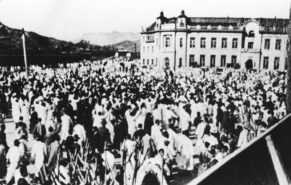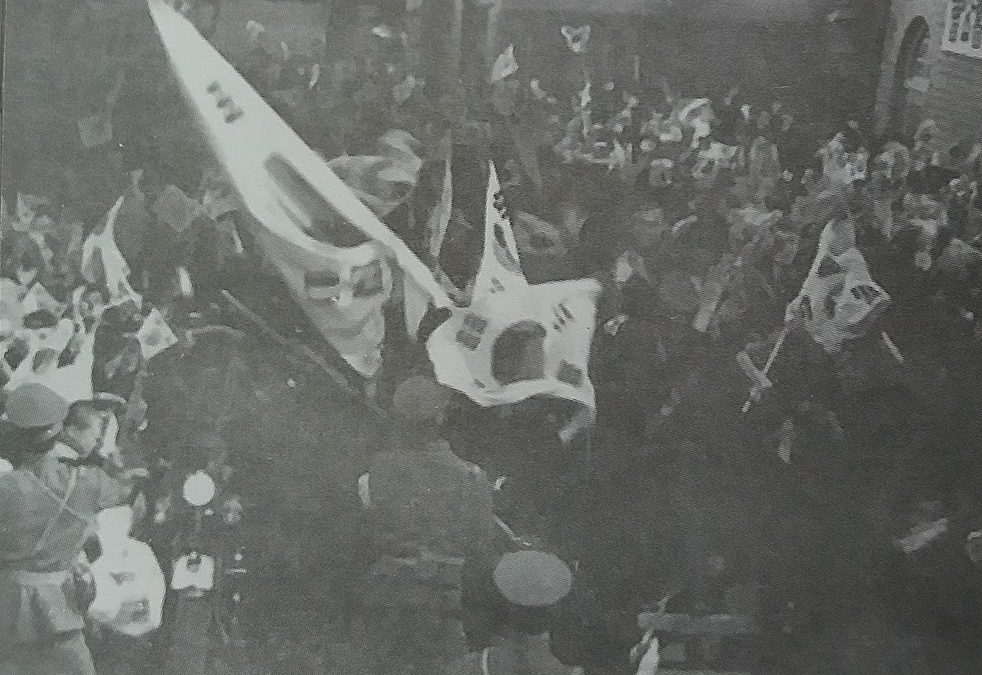Many people know that the March 1st Korean Independence Movement was a peaceful civil society movement, but what most know much less about is what caused this three-month-long, peninsula-wide outpouring of public support from Koreans both at home and internationally. In fact, even while there was strong anti-colonial sentiment from the beginning of Japanese occupation of the peninsula, it was the violation of one of the most fundamental human right to freedom of conscience that became the catalyst for the movement in 1919.
Japan claimed Korea as a protectorate in 1905 then followed with a more formal annexation in 1910. With this, Japanese colonial authorities began a takeover of the basic land and labor of the country. While this had troubled many at the time, the corruption and ineptitude of the former governmental authorities of the flailing Chosun dynasty had made this change with little resistance from the populace.

Manse demonstration on March 1, 1919 (Author: 한국사진사연구소 Source : 공유마당)
The importance of religious freedom can be seen throughout history. Time and time again, when this basic freedom is taken away from a group of people, civil society is unable to establish lasting peace and falls into chaos and rebellion.
It was no coincidence that most of the signatories of the Korean Declaration for Independence did so as representatives of different Korean faith communities. Even though these 33 courageous leaders from different religious backgrounds—Christian, Buddhist, Cheondogyo, etc.—they were each cognizant of the fact that there were fundamental human rights and values that they shared across faith traditions. It is this spirit of cross-community cooperation and social engagement that we seek to capture today in the “Korean Dream,” inspiring the movement of Action for Korea United (AKU).
By working across all lines of difference and protecting fundamental freedoms in pursuit of a peaceful, principled Korean reunification, we see hope for a Korea that can bring benefit to all humanity.
As we commemorate the March 1st movement today in 2020, it is worth remembering those who came together across religious divides to pursue a greater dream of a “free, independent and united” Korea.

